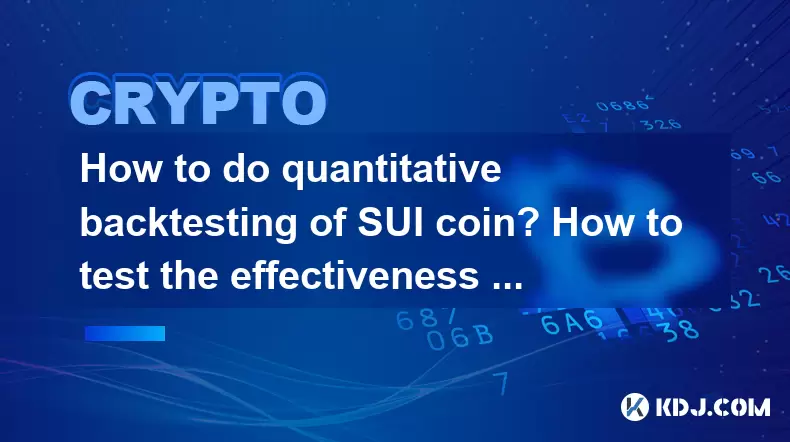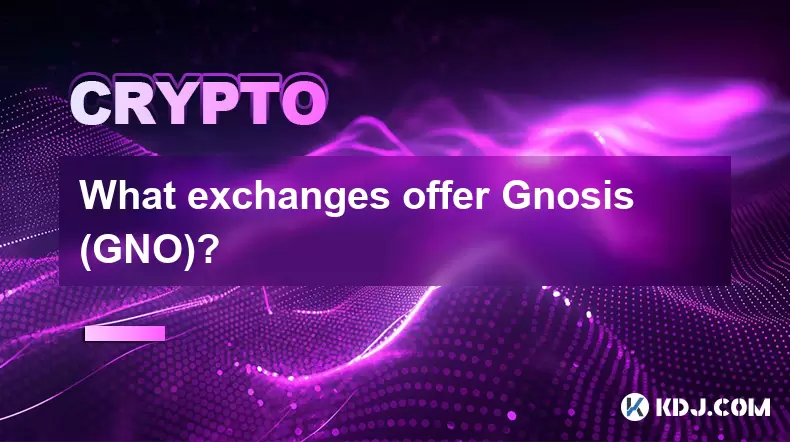-
 Bitcoin
Bitcoin $119000
-2.21% -
 Ethereum
Ethereum $4315
1.01% -
 XRP
XRP $3.151
-3.11% -
 Tether USDt
Tether USDt $0.0000
0.00% -
 BNB
BNB $808.5
-0.71% -
 Solana
Solana $175.8
-4.21% -
 USDC
USDC $0.9999
0.00% -
 Dogecoin
Dogecoin $0.2250
-3.92% -
 TRON
TRON $0.3469
1.77% -
 Cardano
Cardano $0.7818
-3.81% -
 Chainlink
Chainlink $21.47
-2.10% -
 Hyperliquid
Hyperliquid $43.30
-6.81% -
 Stellar
Stellar $0.4370
-2.84% -
 Sui
Sui $3.682
-4.40% -
 Bitcoin Cash
Bitcoin Cash $590.8
2.67% -
 Hedera
Hedera $0.2484
-5.20% -
 Ethena USDe
Ethena USDe $1.001
0.00% -
 Avalanche
Avalanche $23.10
-4.29% -
 Litecoin
Litecoin $119.2
-3.96% -
 Toncoin
Toncoin $3.409
0.90% -
 UNUS SED LEO
UNUS SED LEO $9.016
-1.29% -
 Shiba Inu
Shiba Inu $0.00001304
-3.82% -
 Uniswap
Uniswap $11.18
1.33% -
 Polkadot
Polkadot $3.913
-3.51% -
 Cronos
Cronos $0.1672
-3.08% -
 Dai
Dai $1.000
0.02% -
 Ethena
Ethena $0.7899
-4.70% -
 Bitget Token
Bitget Token $4.400
-1.23% -
 Pepe
Pepe $0.00001132
-5.93% -
 Monero
Monero $257.9
-6.44%
How to do quantitative backtesting of SUI coin? How to test the effectiveness of SUI coin strategy?
To backtest SUI coin strategies, use Python with Backtrader, analyze historical data, and assess effectiveness through out-of-sample testing and key performance metrics.
May 20, 2025 at 05:22 am

How to Do Quantitative Backtesting of SUI Coin? How to Test the Effectiveness of SUI Coin Strategy?
Quantitative backtesting is a crucial process for traders and investors looking to evaluate the performance of their trading strategies on historical data. When it comes to a specific cryptocurrency like SUI coin, understanding how to effectively backtest and test the strategy's effectiveness is essential. This article will guide you through the steps and considerations involved in quantitative backtesting of SUI coin, as well as how to assess the effectiveness of your strategy.
Understanding SUI Coin and Its Market Dynamics
Before diving into the technical aspects of backtesting, it's important to have a clear understanding of SUI coin and its market dynamics. SUI coin, like many other cryptocurrencies, is subject to high volatility and influenced by various market factors such as news, regulatory changes, and overall market sentiment. Understanding these dynamics will help in creating a more robust backtesting strategy.
To start, gather information about SUI coin's historical price data, trading volumes, and any significant events that may have impacted its price. This data will form the foundation of your backtesting process.
Setting Up Your Backtesting Environment
To perform quantitative backtesting, you need a suitable environment. Several tools and platforms are available for this purpose, such as Python with libraries like Backtrader or Quantopian, or specialized software like TradingView. For this example, we will use Python with the Backtrader library, which is widely used for backtesting trading strategies.
Install Python and the necessary libraries:
- Open your command line interface.
- Run
pip install backtraderto install the Backtrader library.
Set up your data feed:
- Download historical data for SUI coin from a reliable source such as a cryptocurrency exchange API or a data provider like CoinAPI.
- Ensure the data is in a compatible format, such as CSV, and includes timestamps, open, high, low, close, and volume data.
Create a basic backtesting script:
- Import the Backtrader library.
- Initialize the Cerebro engine.
- Add the data feed to Cerebro.
- Define your trading strategy.
- Run the backtest and analyze the results.
Here’s a basic example of a Python script for backtesting:
import backtrader as btclass SUI_Coin_Strategy(bt.Strategy):
def __init__(self):
self.dataclose = self.datas[0].close
def next(self):
if not self.position: # not in the market
if self.dataclose[0] > self.dataclose[-1]: # if the close price is higher than the previous close price
self.buy() # buy
else:
if self.dataclose[0] < self.dataclose[-1]: # if the close price is lower than the previous close price
self.sell() # sell
cerebro = bt.Cerebro()
Add a strategy
cerebro.addstrategy(SUI_Coin_Strategy)
Load data
data = bt.feeds.YahooFinanceCSVData(dataname='path/to/your/sui_coin_data.csv', fromdate=datetime(2022, 1, 1), todate=datetime(2023, 1, 1))
cerebro.adddata(data)
Set our desired cash start
cerebro.broker.setcash(100000.0)
Add a FixedSize sizer according to the stake
cerebro.addsizer(bt.sizers.FixedSize, stake=10)
Set the commission
cerebro.broker.setcommission(commission=0.001)
Print out the starting conditions
print('Starting Portfolio Value: %.2f' % cerebro.broker.getvalue())
Run over everything
cerebro.run()
Print out the final result
print('Final Portfolio Value: %.2f' % cerebro.broker.getvalue())
Developing and Implementing Your SUI Coin Strategy
Your SUI coin strategy should be based on specific trading rules or indicators that you believe will be effective. Common strategies include trend-following, mean reversion, or momentum-based strategies. For example, a simple moving average crossover strategy could be used for SUI coin.
Define your entry and exit rules:
- For instance, you might buy when the short-term moving average crosses above the long-term moving average and sell when it crosses below.
Implement the strategy in your backtesting script:
- Modify the
SUI_Coin_Strategyclass to include your entry and exit rules. - Use indicators like moving averages, RSI, or MACD to refine your strategy.
- Modify the
Here's an example of implementing a moving average crossover strategy:
class SUI_Coin_MA_Strategy(bt.Strategy):params = (
('fast_ma', 10),
('slow_ma', 30),
)
def __init__(self):
self.fast_ma = bt.indicators.SimpleMovingAverage(self.data.close, period=self.params.fast_ma)
self.slow_ma = bt.indicators.SimpleMovingAverage(self.data.close, period=self.params.slow_ma)
self.crossover = bt.indicators.CrossOver(self.fast_ma, self.slow_ma)
def next(self):
if not self.position:
if self.crossover > 0:
self.buy()
elif self.crossover < 0:
self.sell()
Analyzing the Results of Your Backtest
After running your backtest, it's crucial to analyze the results to understand the effectiveness of your SUI coin strategy. Key metrics to consider include:
- Profit and Loss (P&L): The total return on your investment.
- Sharpe Ratio: A measure of risk-adjusted return.
- Drawdown: The largest peak-to-trough decline in your portfolio value.
- Win Rate: The percentage of trades that were profitable.
Use Backtrader's built-in analyzers to generate these metrics:
cerebro.addanalyzer(bt.analyzers.SharpeRatio, _name='sharpe')
cerebro.addanalyzer(bt.analyzers.DrawDown, _name='drawdown')
cerebro.addanalyzer(bt.analyzers.TradeAnalyzer, _name='trades')
results = cerebro.run()
strat = results[0]
print('Sharpe Ratio:', strat.analyzers.sharpe.get_analysis())
print('Drawdown:', strat.analyzers.drawdown.get_analysis())
print('Trade Analysis:', strat.analyzers.trades.get_analysis())
Testing the Effectiveness of Your SUI Coin Strategy
To test the effectiveness of your SUI coin strategy, you need to go beyond just looking at the backtest results. Consider the following steps:
Out-of-Sample Testing: Use a portion of your data that was not used in the initial backtest to see how your strategy performs on unseen data. This helps to validate that your strategy is not overfitting to the historical data.
Walk-Forward Optimization: Gradually move your testing window forward in time to continuously update and refine your strategy parameters. This approach helps to ensure that your strategy remains effective over time.
Stress Testing: Simulate extreme market conditions to see how your strategy would perform during periods of high volatility or market crashes. This can be done by adjusting the historical data to reflect more extreme price movements.
Comparison with Benchmarks: Compare the performance of your strategy against a simple buy-and-hold approach or other established trading strategies. This helps to put your results into perspective and assess whether your strategy adds value.
FAQs
Q1: Can I use other programming languages for backtesting SUI coin strategies?
Yes, while Python with Backtrader or Quantopian is commonly used, other languages like R with Quantstrat, or even proprietary platforms like MetaTrader, can be used for backtesting cryptocurrency strategies.
Q2: How much historical data should I use for backtesting SUI coin?
The amount of historical data to use depends on the time frame of your strategy. For short-term strategies, a few months to a year of data might be sufficient, while longer-term strategies may require several years of data to capture different market cycles.
Q3: Are there any specific risks associated with backtesting SUI coin strategies?
Yes, backtesting involves risks such as overfitting, where a strategy performs well on historical data but fails in live trading. Additionally, the cryptocurrency market's high volatility and regulatory changes can impact the reliability of backtest results.
Q4: How can I improve the accuracy of my SUI coin backtesting results?
To improve accuracy, ensure you use high-quality, clean data, incorporate transaction costs and slippage into your backtest, and validate your strategy with out-of-sample testing and walk-forward optimization.
Disclaimer:info@kdj.com
The information provided is not trading advice. kdj.com does not assume any responsibility for any investments made based on the information provided in this article. Cryptocurrencies are highly volatile and it is highly recommended that you invest with caution after thorough research!
If you believe that the content used on this website infringes your copyright, please contact us immediately (info@kdj.com) and we will delete it promptly.
- PumpFun (PUMP) Price: Riding the Meme Coin Wave or Facing a Wipeout?
- 2025-08-12 16:50:12
- Arctic Pablo Coin: Meme Coin Growth Redefined?
- 2025-08-12 16:50:12
- Ether ETFs Surge: Inflows and Bull Signs Point to $4K ETH?
- 2025-08-12 16:30:12
- Bitcoin, Crypto Market, and CPI Anticipation: A New York Minute on Volatility
- 2025-08-12 16:30:12
- Bitcoin, CPI, and Market Fears: Navigating the Crypto Landscape
- 2025-08-12 15:10:13
- BTC Traders Eye ETH Targets as CPI Looms: A New York Minute
- 2025-08-12 15:10:13
Related knowledge

How to purchase Aragon (ANT)?
Aug 09,2025 at 11:56pm
Understanding Aragon (ANT) and Its PurposeAragon (ANT) is a decentralized governance token that powers the Aragon Network, a platform built on the Eth...

Where to trade Band Protocol (BAND)?
Aug 10,2025 at 11:36pm
Understanding the Role of Private Keys in Cryptocurrency WalletsIn the world of cryptocurrency, a private key is one of the most critical components o...

What is the most secure way to buy Ocean Protocol (OCEAN)?
Aug 10,2025 at 01:01pm
Understanding Ocean Protocol (OCEAN) and Its EcosystemOcean Protocol (OCEAN) is a decentralized data exchange platform built on blockchain technology,...

Where can I buy UMA (UMA)?
Aug 07,2025 at 06:42pm
Understanding UMA and Its Role in Decentralized FinanceUMA (Universal Market Access) is an Ethereum-based decentralized finance (DeFi) protocol design...

What exchanges offer Gnosis (GNO)?
Aug 12,2025 at 12:42pm
Overview of Gnosis (GNO) and Its Role in the Crypto EcosystemGnosis (GNO) is a decentralized prediction market platform built on the Ethereum blockcha...

How to buy Storj (STORJ) tokens?
Aug 09,2025 at 07:28am
Understanding Storj (STORJ) and Its Role in Decentralized StorageStorj is a decentralized cloud storage platform that leverages blockchain technology ...

How to purchase Aragon (ANT)?
Aug 09,2025 at 11:56pm
Understanding Aragon (ANT) and Its PurposeAragon (ANT) is a decentralized governance token that powers the Aragon Network, a platform built on the Eth...

Where to trade Band Protocol (BAND)?
Aug 10,2025 at 11:36pm
Understanding the Role of Private Keys in Cryptocurrency WalletsIn the world of cryptocurrency, a private key is one of the most critical components o...

What is the most secure way to buy Ocean Protocol (OCEAN)?
Aug 10,2025 at 01:01pm
Understanding Ocean Protocol (OCEAN) and Its EcosystemOcean Protocol (OCEAN) is a decentralized data exchange platform built on blockchain technology,...

Where can I buy UMA (UMA)?
Aug 07,2025 at 06:42pm
Understanding UMA and Its Role in Decentralized FinanceUMA (Universal Market Access) is an Ethereum-based decentralized finance (DeFi) protocol design...

What exchanges offer Gnosis (GNO)?
Aug 12,2025 at 12:42pm
Overview of Gnosis (GNO) and Its Role in the Crypto EcosystemGnosis (GNO) is a decentralized prediction market platform built on the Ethereum blockcha...

How to buy Storj (STORJ) tokens?
Aug 09,2025 at 07:28am
Understanding Storj (STORJ) and Its Role in Decentralized StorageStorj is a decentralized cloud storage platform that leverages blockchain technology ...
See all articles

























































































